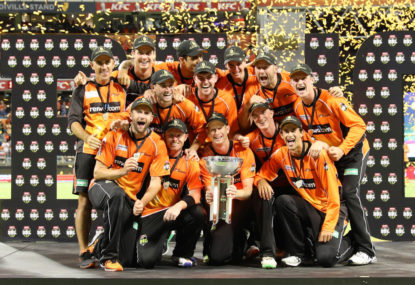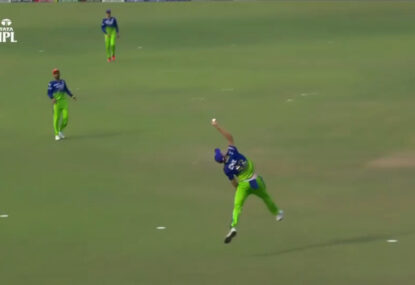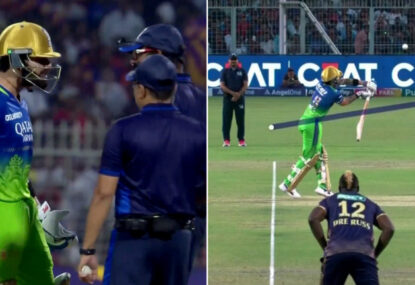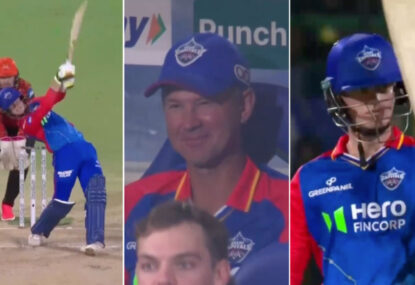The metrics were overwhelmingly positive; as night after night the turnstiles clicked over and TV sets around the country tuned in en masse.
So it shouldn’t have come as any surprise when it was announced that the 2017/18 season will see the Big Bash League extended by eight games.
Since launching in 2011-12, six seasons of the BBL has seen massive growth in the T20 format. Particularly after going to free-to-air on Network Ten in the third season, interest has soared.
Attendances have grown steadily, and are now up around the 30,000 average. TV numbers have also risen every season, now up around one million viewers nationwide every night.
For Channel Ten, who received the BBL rights for $20m per season, almost as a consolation prize; the BBL has become a gold mine. Huge ratings every night, consistently beating every other sporting event or other programming being screened at the time.
Even the traditional January ratings powerhouse of the Australian Open has been unable to match it with the Big Bash; the tennis only out-rating the Big Bash during Nick Kyrgios’ train-wreck meltdown.
It’s not hard to see the appeal. You can see a whole game from start to finish in an evening. There’s plenty of big hits, non-stop action; and the slow passages of play from the longer forms of the games have been cut out.
Tickets are affordable, and there’s non-stop entertainment. Not just the game but the music, the flame-throwers, the gimmicks. There’s merchandise given away at the gates; and a kids zone with a bouncy castle. Fun for the whole family and no time for restless kids to be bored.
It’s a late night, with the games in prime time. But during school holidays, that doesn’t matter.
The first season saw each of the eight teams play seven games, everyone playing everyone else once. The next five seasons have had eight games for each team, four home and four away; playing each team once and one team twice.
The seventh season will see the season extended to ten games for each team. Five home and five away, facing three teams a second time. More derbies.
An extra home game increases the value of memberships and sponsorship packages. It’s a money-spinner for the clubs.
And, with the TV rights up for negotiation, the extra games will add to the value that Cricket Australia will receive from the broadcasters.
The ratings and crowds stay strong all season. It seems the public continue to keep on loving the Big Bash .
Extending the season looks a no-brainer.
Scheduling can be a challenge. It’s a tight fixture list at that time of year, between the Big Bash and the international program of Tests and one-day internationals.
Eight more games to fit in. Maybe they could squeeze in the odd double-header, maybe they could play Christmas Day. But there’s still nearly a week of extra games.
Do they fit those extra games at the start or the end? Crowds tend to be lower before Christmas, as the experience in 2012-13 showed.
But if they put the games on at the end, running into February, we’re running into the school term. Would families find the late nights more of a problem when there’s school the next day?
And would the extra days of the competition affect the availability of overseas players? Would they miss finals or important games because of commitments elsewhere? It’s a big unknown.
The Big Bash takes a break on nights when one-day internationals are played. That won’t change next year. The one-day international dates have already been announced.
But if the Big Bash is extended again at some stage in the future, could we see the one-day internationals moved to open up the current ODI dates to the Big Bash?
That in itself may not be a bad thing. If the one-day internationals were played in October-November before the Tests, it would create high-rating cricket content into a time of year when there’s not much other sport on. And having the one-day internationals at a different time of year would make the international players available to play Big Bash after the SCG Test is done and dusted.
Interest in the Big Bash would rise even further if the likes of David Warner, Steve Smith, and Mitchell Starc were able to join the Big Bash after the Tests were finished.
We’ve seen the club versus country issue surface. For West Indian players, where the Big Bash pays better than national team contracts, we’ve seen players make themselves unavailable for international duty so they can play T20.
Compare the star-studded West Indian team that took out the World T20 last year to the rabble that toured Australia last summer. The difference was players who were in Australia but playing the Big Bash.
I can’t help thinking that the Pakistan team that just toured Australia is ripe for being raided by T20 franchises. They can’t be enjoying never playing at home and having to play in front of 20 people on roads in the UAE desert heat.
That doesn’t affect the Australians yet. The national team contracts are very lucrative and pride in selection is high.
What of the domestic season? as it stands, half the Sheffield Shield will be played before the Big Bash, and then a break of nearly two months before it again resumes.
Sheffield Shield is important for the development of players and preparing them for Test cricket. And it’s a tradition of the game.
But the commercial reality is that the split Sheffield Shield season will remain. A competition that attracts 30,000 per day through the games and a million TV viewers a night trumps a competition that draws 100 a day and which no TV organisation will touch.
Sheffield Shield has to fit in around the Big Bash. The fans have spoken, and what they want comes first.
And domestic players would love the recognition of playing Big Bash; and the buzz of playing in front of crowds many multiples higher than any other form of cricket they’ll play at state level.
Does extending the Big Bash contribute to player burnout? It shouldn’t.
For the bowlers, the most injury-prone players, they’re being asked to bowl at most an extra eight overs. If that’s a problem, they can over-compensate for that by sitting out an ODI or Matador Cup game.
Does it contribute to spectator burnout? I haven’t seen any evidence that is imminent. The crowds keep coming every night, the TV audiences keep tuning in.
It’s only one more home game for each club, it’s only adding an extra week. Hardly a massive extension.
But if you’re feeling burnt out, or at risk of it, you always have the option to pick eight games and not watch them. Don’t go to them; and turn your TV off or watch something else. That is your right.
But it’s a right that 30,000 people in person and a million on TV each night won’t exercise.




































































































